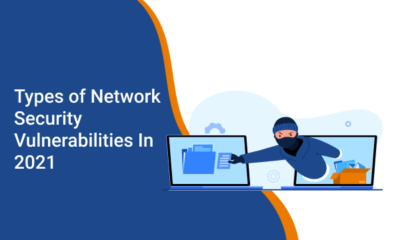Technology
Hospitals are not secure from cyber attacks

The landscape of cybersecurity within health systems witnessed a significant uptick in ransomware attacks during 2023. A total of 46 ransomware incidents were reported, marking a sharp rise from the 25 attacks recorded in the previous year, 2022. This escalation underscores a growing trend of cyber threats targeting the healthcare sector, highlighting an urgent need for enhanced security measures and robust digital defenses.
The impact of these ransomware attacks extended across a wide swath of the United States healthcare infrastructure, affecting 141 hospitals. This widespread disruption not only posed immediate operational challenges but also raised serious concerns about patient privacy and the security of sensitive health information. The breach of hospital systems underscores the critical vulnerability of healthcare institutions to sophisticated cyber-attacks and emphasizes the importance of safeguarding patient data against unauthorized access.
Among the 46 ransomware incidents reported in 2023, data theft was a significant component in 32 cases. This alarming frequency of data breaches within ransomware events reveals a dual threat: not only do these attacks disrupt hospital operations and patient care, but they also compromise the confidentiality of potentially millions of patients’ personal and health information. This dual facet of ransomware attacks—disruption and data theft—significantly elevates the stakes, necessitating a concerted effort from health systems nationwide to bolster their cybersecurity frameworks and protect against future incidents.
Healthcare organizations often find themselves grappling with cybersecurity challenges, leading to a state where their security measures may not be as robust as necessary. This vulnerability can stem from a myriad of factors, including limited budgets that prioritize clinical operations and patient care over IT security investments, the complexity of healthcare IT systems that integrate a wide range of devices and software, and a shortage of personnel skilled in cybersecurity. Moreover, the healthcare sector’s requirement for open and accessible patient information for medical staff often conflicts with the stringent controls needed for optimal cybersecurity. Consequently, these organizations face significant hurdles in achieving the level of security that effectively safeguards against the increasingly sophisticated landscape of cyber threats.
“Healthcare organizations are a prime target for cyber attacks due to the wealth of sensitive patient data they possess, yet many remain underprepared for the sophistication and frequency of these threats. The main challenge lies in the sector’s complex ecosystem, outdated IT infrastructures, and a general lack of cybersecurity investment,” shares Sarah M. Worthy, CEO of DoorSpace.
To enhance their security posture, healthcare organizations must undertake a multifaceted approach that addresses the core vulnerabilities within their systems. This involves allocating sufficient budgets for cybersecurity initiatives, even if it means re-evaluating priorities to ensure IT security is considered as critical as clinical operations. Additionally, simplifying and standardizing healthcare IT systems to minimize complexity can reduce potential attack surfaces. Investing in the recruitment and training of skilled cybersecurity personnel is also crucial, as is fostering a culture of security awareness among all staff. Healthcare organizations should implement stringent access controls and encryption to protect patient information, balancing the need for accessibility with security. Regularly updating and patching systems, conducting security audits, and developing comprehensive incident response plans are also essential steps. By adopting these strategies, healthcare organizations can significantly strengthen their defenses against cyber threats.
“To strengthen their defenses, healthcare entities must prioritize comprehensive risk assessments, invest in modern cybersecurity technologies, and foster a culture of security awareness among all staff. It’s not just about deploying advanced security measures; it’s about integrating cybersecurity into the structure of healthcare operations and the organization’s culture.”
The surge in ransomware attacks on the healthcare sector in 2023 serves as a stark reminder of the critical vulnerabilities that exist within health systems. These incidents not only disrupt essential services but also compromise the privacy and trust of countless patients. As the sector grapples with the evolving sophistication of cyber threats, the necessity for a comprehensive and proactive approach to cybersecurity cannot be overstated. By embracing a combination of strategic investments, technological upgrades, and a culture of security mindfulness, healthcare organizations can better protect themselves and their patients from the dire consequences of cyber attacks. The journey towards enhanced cybersecurity is complex and ongoing, but with focused efforts and collaboration, the healthcare industry can aspire to achieve a level of security that matches the importance of the services they provide.







